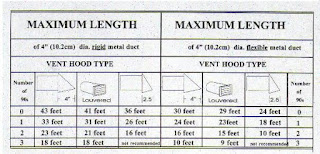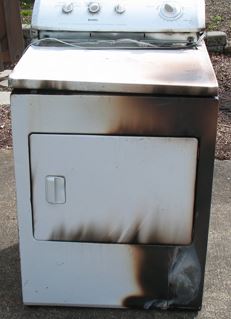Clothes Dryer Fires


Some time ago I was inspecting a house that had a fire due to a clothes dryer vent. I have seen a few of these throughout my home inspection career.
I know that some home inspectors do not inspect clothes dryers, however I think even if that is not a requirement in your area, the dryer connection (electric or gas) and the dryer vent should be inspected. We know that lint is flammable and homeowners do not always properly clean the vent pipe. Here is a link you can give to your clients showing them how to properly clean their dryer vents:
http://m.wikihow.com/Clean-a-Clothes-Dryer-Vent
You can refer to the chart at the top that shows you the proper dryer vent length. A home inspection is also a safety inspection. So here is what a home inspector should look for to ensure your client does not have a dryer fire, and how they should inform their client regarding dryer vent safety:
- Dryer vents should be at least 4 inch diameter pipe
- Smaller diameter will restrict air flow, where a large pipe may not allow all of the lint to escape
- The vent pipe should be supported every 4 feet
- Vent pipes should be sealed together with aluminum tape not screws
- Vent pipes should be joined with the smaller diameter pipe inserting into the larger diameter
- Vent pipes should not be concealed
- Combustion air for a gas dryer should be a minimum of 100 square inches
- Dryer vents should always terminate outside, not in an attic or crawl space
- Dryer vents should not terminate within 3 feet of a door, window, or heat pump condenser
- Vent pipes should not terminate into a bucket type apparatus
- Lint that is stuck in the exterior damper, or visible behind the dryer
Related Articles:
- Window Leaks
- Proper Air Sealing and Moisture Control
- The Smoke Detector Difference
- Proper Air Sealing
Want To Learn More? Click HERE to Search Our Full Database Of Home Inspector Newsletters.



